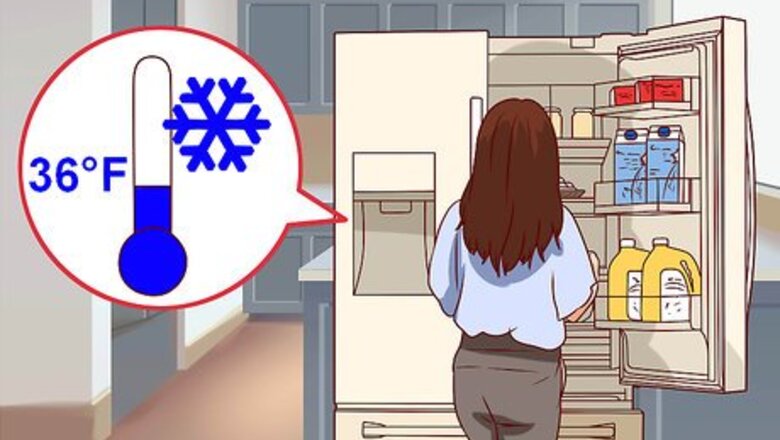
views
X
Research source
Readying Your Freezer for Dry Aging

Designate a separate dry aging refrigerator or freezer. To dry age your meat safely and properly, you'll need to take steps to limit changes in temperature and humidity. It is especially important to keep your meat at the right temperature during the aging process. Designating a separate dry aging refrigerator or freezer is the easiest way of doing this. Meat will spoil above 40°F (4°C) but will freeze below 32°F (0°C). The ideal temperature for aging is 36°F (2.2°C) throughout the entire aging process. Using your everyday refrigerator is not recommended. The more you open and close your refrigerator/freezer, the more the temperature and humidity will change. You might use a small, temperature adjustable "dorm" refrigerator or a storage freezer for your dry aging.
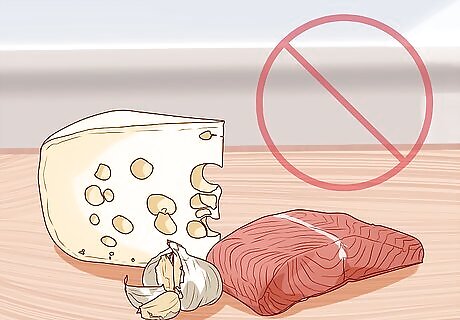
Clean your refrigerator of possible contaminants. Meats will absorb other strong flavors and odors. Items like cheese, fish, and garlic will likely influence the taste of your meat while it ages. A thorough cleaning before dry aging will help protect the natural flavor profile of your meat. The best way to ensure that there are no subtle contaminants in your refrigerator/freezer is to defrost and clean your freezer with a suitable general purpose cleaner. If smells linger after cleaning, sprinkle a layer of baking soda on the inner surfaces of your refrigerator/freezer and thoroughly wipe it with a rag.
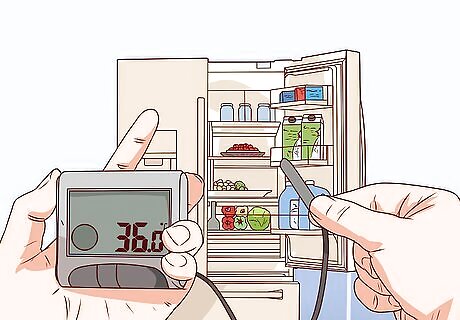
Verify the temperature in your refrigerator/freezer. Home refrigerators and freezers sometimes do not have as fine an internal thermometer as commercial grade ones. In some cases, your refrigerator might not have an internal temperature gauge, and you'll need to buy one so you ensure a consistent temperature throughout the aging process. A normal thermometer might not stand up to the cold temperatures as well as a specifically intended cold temperature/freezer thermometer. These will likely be available at your local hardware store. You might want to choose a thermometer that has a humidity gauge, as well. For consistent results, a humidity of 60% should be maintained, though many at home dry-agers have found a wider range has little effect on the end product.

Add a fan for improved circulation. Air circulation is important for the dry aging process. Limited circulation can lead to your meat failing to dehydrate at the optimal level. Adding a small desk fan to the inside of your meat refrigerator/freezer can solve this problem. You may need to cut a notch in the seal of your refrigerator/freezer for the cord of the fan. After fitting the cord into the notch, you may want to pack any open gaps with some kind of insulation.
Selecting and Preparing the Meat
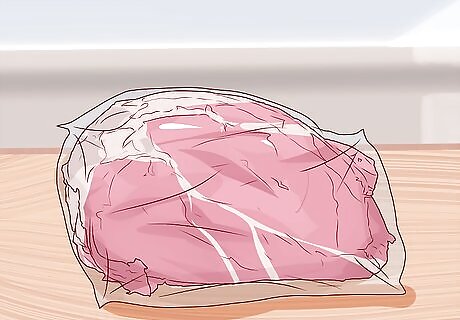
Choose a high quality, large cut of meat. You'll also want your meat to be a kind that uses quick cooking methods, like New York strips, rib steak, and porterhouse cuts. Small cuts of meat should be avoided, as the loss of moisture during aging can make these seem too small to be the main course of a meal. Larger pieces, on the other hand, can be trimmed down. Individually cut steaks will not work for the dry aging process. You'll need a whole cut, like rib sections 103, 107, 109A, and 109 Export. Boneless beef rib or loin roast rated as "choice" or "prime" are also good options for your dry aging. When buying one of these cuts from a butcher, you should ask him not to trim your cut of meat at all. Do not trim your meat before storing it for dry aging.
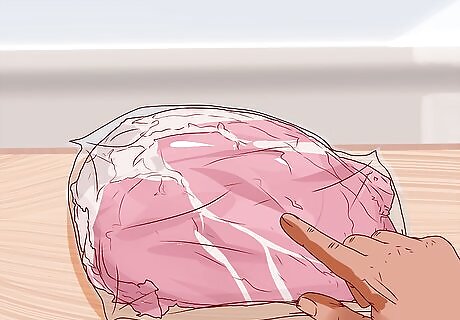
Examine the color of the meat prior to storing. The color is directly related to the tenderness of the beef and how long the aging process should last. If your beef is darker, it does not need to be aged more than a week. Beef that is lighter in color should be aged more than 7 days, but no longer than 30 days. If you have difficulty discerning the color of your meat at a glance, you might want to compare it side by side with a fresh cut of meat.
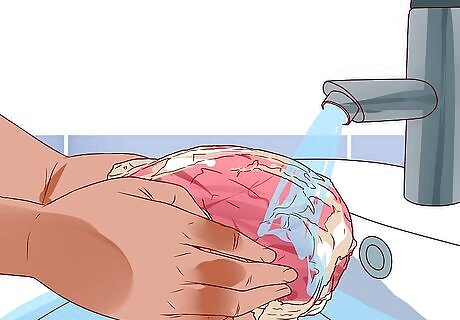
Unwrap and rinse the meat. Remove your meat from the packaging it came wrapped in. Then, with cool water, thoroughly rinse all parts of the meat exposed to the open air. After you have finished rinsing, pat the meat dry with paper towels. Once your meat is dry, it's ready to be wrapped.
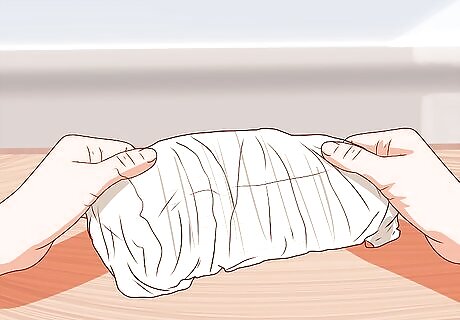
Wrap your meat in cheesecloth. The cheesecloth will form a protective barrier around your meat and will prevent the meat from dehydrating too suddenly. Wrap your cut of meat loosely in the cheesecloth so that all exposed portions of it are covered by three layers of the cloth. You can also protect your meat from sudden dehydration with a triple thick layer of paper towel.
Dry Aging Your Meat
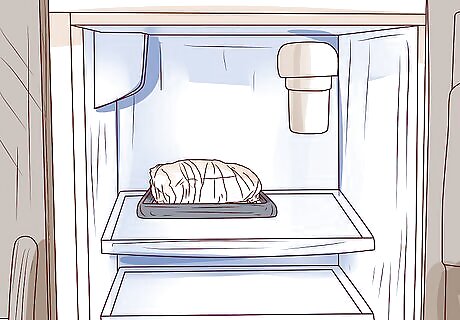
Place your beef in your refrigerator/freezer. You can place your meat directly onto a clean rack of your refrigerator/freezer, or you can first put your meat onto a suitable tray, like a rimmed baking sheet. Set your refrigerator fan to low, and double check the temperature to make sure it is at 36°F (2.2°C).

Rewrap your meat after the first day. As the meat ages, sometimes your covering can get stuck to the meat, leaving fibers behind. After the first day, remove your cheesecloth or paper towel covering, and then loosely rewrap the meat using the same covering. As your paper cheesecloth/paper towel will have already absorbed some moisture from the meat, it'll be less likely to leave fibers behind when the aging process is finished.

Allow your meat to age for the designated time. You'll want to dry age your meat for the length of time you determined it would need from its coloring. You may not notice a difference in your meat when aging it for periods of time shorter than two weeks. It's common for your meat to start developing an unpleasant smell during the aging process. This could affect other meat in your fridge, which is another reason why it's good to use a separate, designated fridge/freezer for aging.
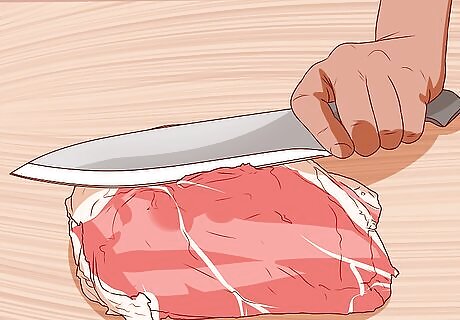
Shave off the dry exterior. The outer parts of the meat will be the most dehydrated. These parts won't likely be edible, but under this crusty surface you'll find the tender, flavorful meat that aged beef is known for. Use a sharp knife to shave free the outer layer. If you notice any fat that has dried, shave this from your meat as well. Good fat that still looks moist, however, should be kept.

Consume the beef soon after aging. Now that the aging is complete, you can cut your meat into portions, like steaks. Shortly after that, your meat should be eaten to prevent an unhealthy amount of post-aging breakdown. If you are unable to eat the meat the day it is done aging, you can leave it in a refrigerator for 1 to 2 days without damaging the meat.



















Comments
0 comment